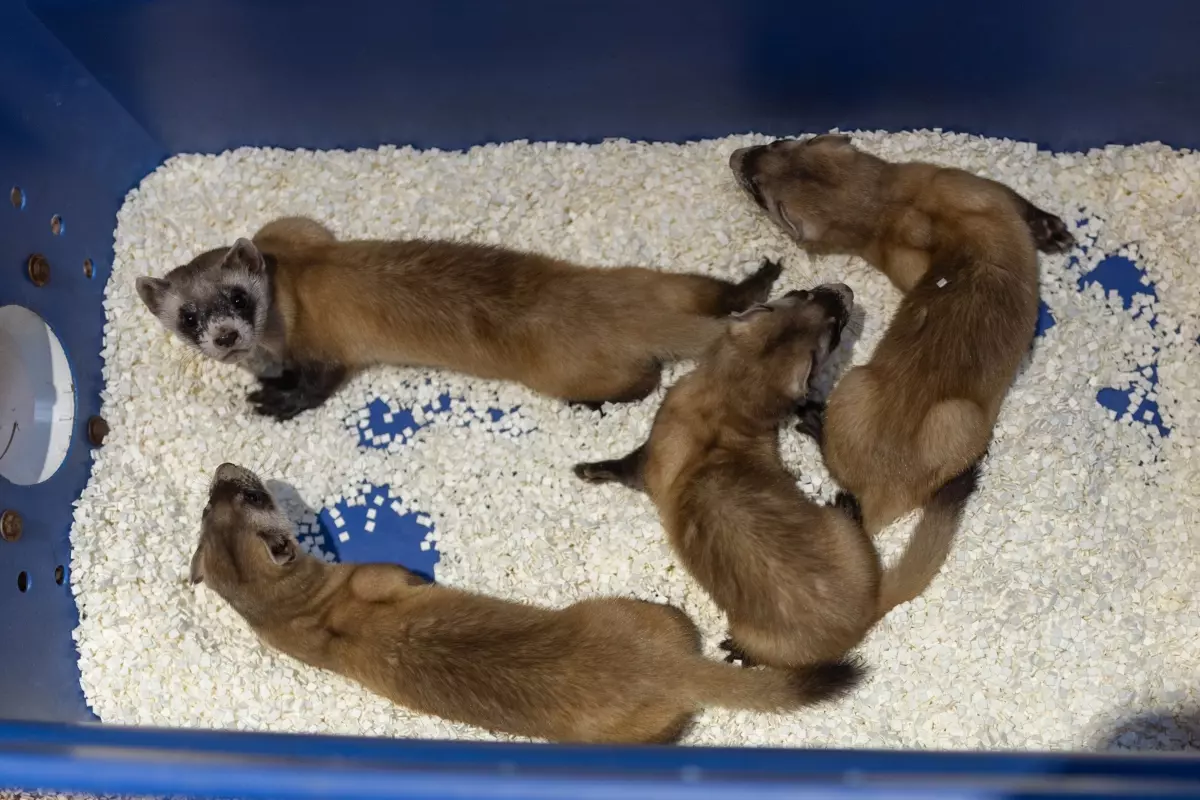A New Generation Begins - Cloned Black-footed Ferret Kits Offer Hope for the Species
Arizona Free Press
← Back to
Other Stories

Written By Adriana Zorrilla
The births represent a powerful milestone in cloning research and breathe new life into efforts to secure the black-footed ferrets’ future in the wild.
In collaboration with our partners, we are proud to announce the birth of four litters of black-footed ferrets this summer at the Smithsonian’s National Zoo and Conservation Biology Institute and the National Black-footed Ferret Conservation Center — an exciting development in ongoing cloning research. These remarkable kits — 6 females and 6 males — represent a story that stretches across decades, technology, and the dedication of countless conservationists.
The new kits are descendants of cloned black-footed ferrets Antonia and Noreen, along with Antonia’s offspring, Sibert and Red Cloud. Antonia and Noreen were cloned in 2023 using preserved tissue from a ferret named Willa, who lived in the 1980s. Willa’s DNA was safeguarded for over 30 years by the Frozen Zoo at the San Diego Zoo Wildlife Alliance, making this achievement a remarkable blend of past preservation and modern science.
This breakthrough began in 2020 with the birth of Elizabeth Ann, the first-ever cloned U.S. endangered species. Though both Elizabeth Ann and Noreen have passed, their legacy lives on through this new generation of kits. The successful reproduction of cloned black-footed ferrets marks another milestone in conservation genetics, showing how cloning technology can help restore lost genetic diversity and unlock new possibilities for species recovery.
The black-footed ferret’s story has never been simple. Once widespread across western North America, their numbers plummeted in the 20th century due to habitat loss and disease. By the late 1970s, the species was believed to be gone forever — until a small population was rediscovered in Wyoming in 1981. Since then, conservationists have led decades of recovery work.
Cloning offers an important tool in addressing genetic challenges and other threats to recovery efforts for black-footed ferrets. The agency is working with states, tribes, landowners, and conservation partners to continue making progress toward recovery of this species through various efforts, including captive breeding programs, reintroduction into the wild, habitat restoration, disease management, and public awareness. These are part of a broader strategy to recover sustainable populations in the wild.
This ongoing research is the result of extensive collaboration among the U.S. Fish and Wildlife Service, Revive & Restore, ViaGen Pets & Equine, Smithsonian’s National Zoo and Conservation Biology Institute, San Diego Zoo Wildlife Alliance, and the Association of Zoos and Aquariums. The partners at Revive & Restore and ViaGen Pets & Equine have pioneered this technology for use in endangered species.
In addition, cloning research today relies on the genetic material that was collected and stored by the Frozen Zoo at San Diego Zoo Wildlife Alliance, starting 50 years ago. The Smithsonian’s National Zoo and Conservation Biology Institute and other facilities under the Association of Zoos and Aquariums provide the technical expertise to care for and house the kits born in the cloning research, as well as other black-footed ferrets in the captive breeding program.
The agency remains steadfast in its mission to recover black-footed ferrets in the wild through reintroduction, habitat conservation, and continuous monitoring. While cloning is not a replacement for these vital efforts, it enhances them — offering new genetic possibilities. With each kit born, the species moves one step closer to a future where it can once again thrive across the North American grasslands.
